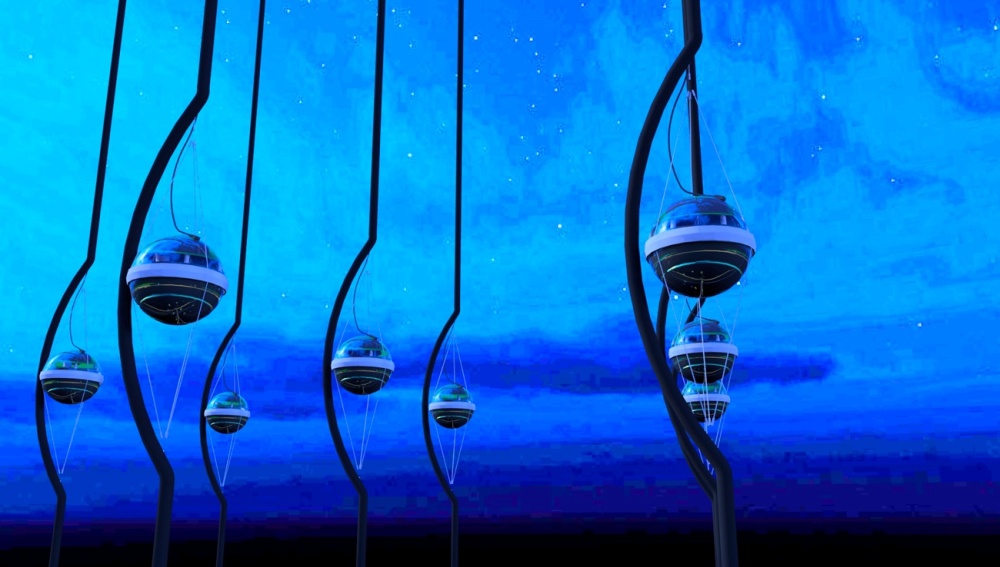Naturally-occurring particle accelerators function throughout the universe all the time, perpetually manifesting in energetic outbursts and other events that reveal a universe far more dynamic than our perception would lead us to believe. These natural accelerators are exploded stars, quasars, and black holes that continually send cosmic messengers our way.
Buried a few kilometres deep in the ice at the South Pole in Antarctica lies IceCube, a telescope, perhaps an unconventional one, consisting of 86 vertical strings, each instrumented with 50 optical modules that are positioned 17 metres apart. The vertical strings are lowered into holes made using a hot water drill technology that employs a 2500-metre high-pressure hose that delivers water to a drill head at a near boiling temperature of 90 °C. The holes are essentially melted into the ice, becoming holes filled with water, which then rises to the level of the ice. After the vertical strings are positioned, the water then freezes, installing the optical modules firmly in place.


IceCube serves to detect high-energy cosmic neutrinos which string through our planet from supernovae and gamma ray bursts. Neutrinos are particles that travel at the speed of light and that have no electric charge and hardly no mass. They do not interact with the electromagnetic force and thus essentially pass through matter unimpeded. In fact, each second, 65 billion neutrinos pass through every square centimetre of your body! Our whole planet is bombarded by an ocean of neutrinos, albeit unnoticeably. However, neutrinos may have played a very important role in the evolution of the early universe and as such, understanding them will allow us to essentially “peer into” stars and any other cosmic phenomena from which neutrinos are emitted.


Since neutrinos are very hard to detect and have a very low interaction probability, very few of the neutrinos out of the millions stringing through will occasionally interact with an atom. Accordingly, for a neutrino detector, one would need a large enough bulk of matter. To cut down on cost, IceCube makes use of the Antarctic ice, effectively employing it as a medium (1 cubic kilometre is occupied) in order to study collisions between neutrinos and the ice atoms. Antarctic ice makes an excellent medium because it is free of radiation and is transparent.

The method of detection is to employ the optical modules in IceCube to detect blue flashes of Cerenkov light – this is emitted when a neutrino interacts with subatomic particles in the ice and gets converted into a high energy muon, moving faster than light and creating these flashes as a result.
We can, accordingly, infer the source of the neutrino from the direction of the muon beam since the direction of the resulting muon beam is retained as the same direction of the neutrino beam. Since muons can also be produced by cosmic ray showers in the atmosphere, this technique is used to differentiate between cosmic ray muons and neutrino muons. In essence, the atmospheric cosmic ray muons (downwards-moving) are singled out and filtered while the neutrino muons (upwards-moving and passing through the Earth) are selected. Therefore, the Earth is employed as a shield since it absorbs the incident flux of atmospheric muons (the atmospheric muons do not penetrate the Earth). Only muons below the telescope are detected.
35,000 neutrinos were detected between May 2010 – May 2012, 20 of which are likely extragalactic neutrinos – with energies of the order of 100 million million electron volts which is suggestive of a cosmic origin!
There is perhaps no doubt that IceCube will usher in a new age of neutrino astronomy, revolutionize particle physics, and refine our understanding of our very mysterious universe. The search for elusive neutrinos is underway and it is quite astronomically exciting what the largest neutrino observatory ever built will unravel!
Featured image courtesy of: IceCube Collaboration. IceCube Lab in the South Pole.
You said “Faster than light”. ehmm, you were kidding right?
LikeLike
Love your blog so far btw, still reading since the first post .. great content!
LikeLike